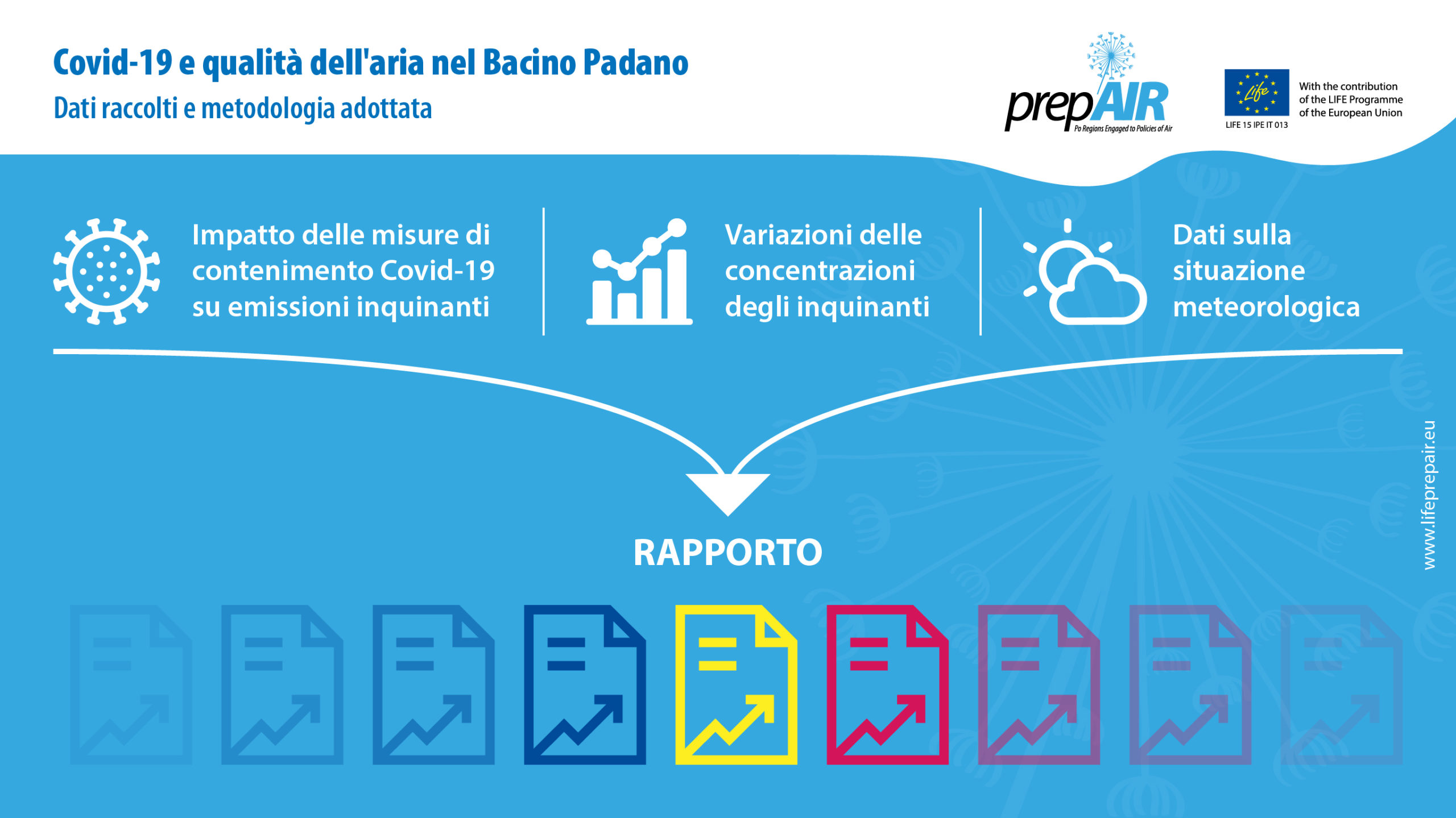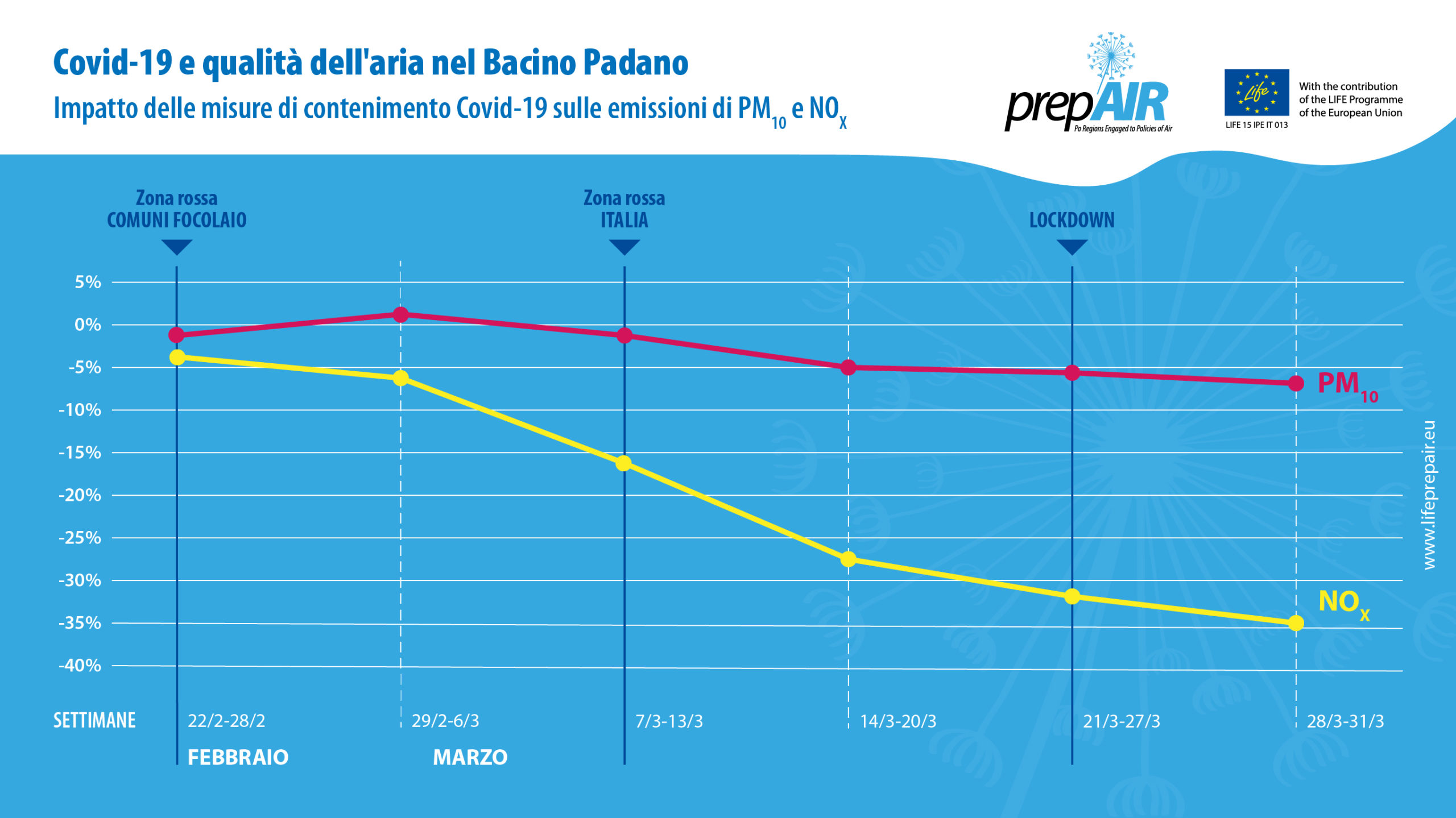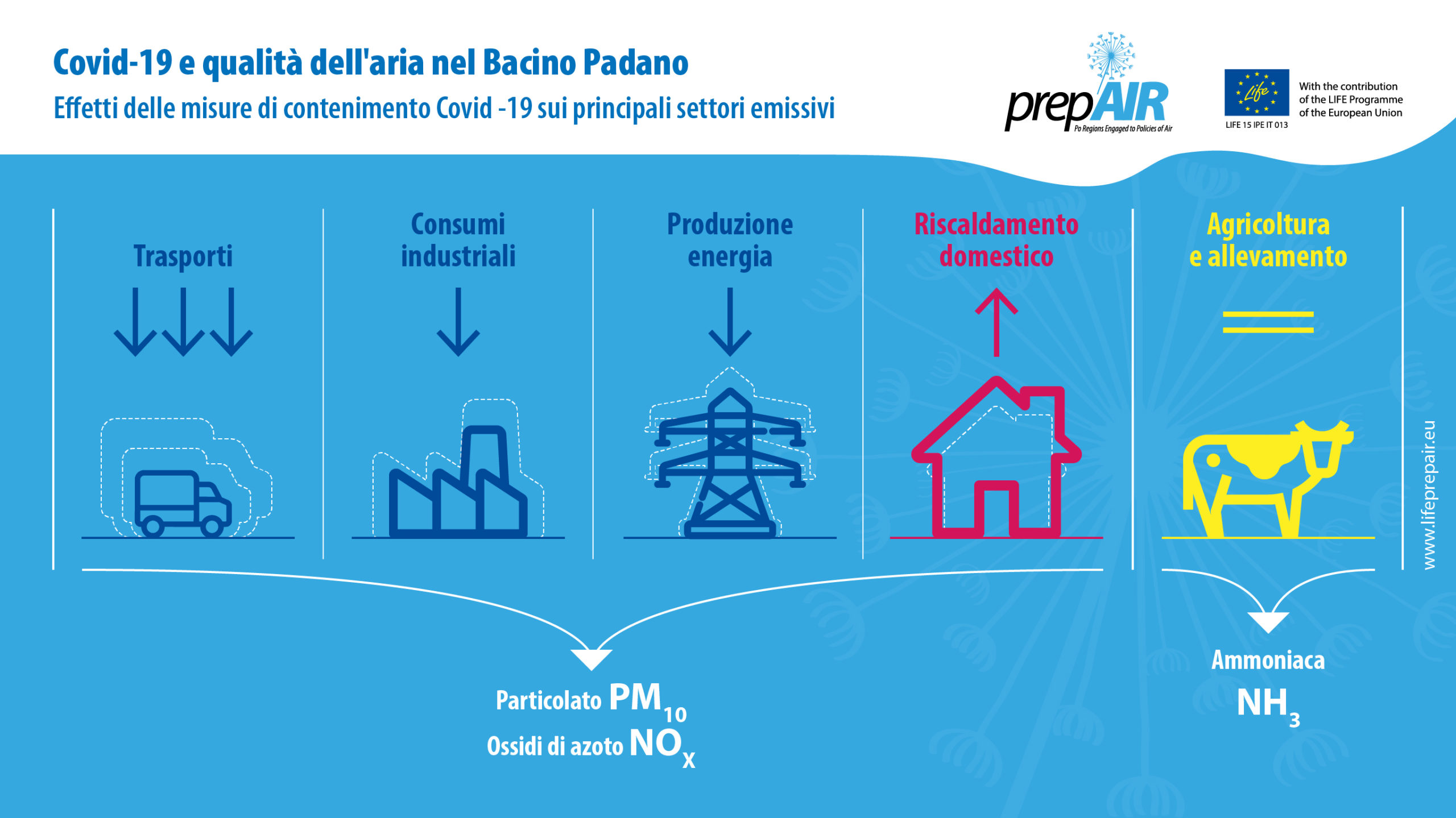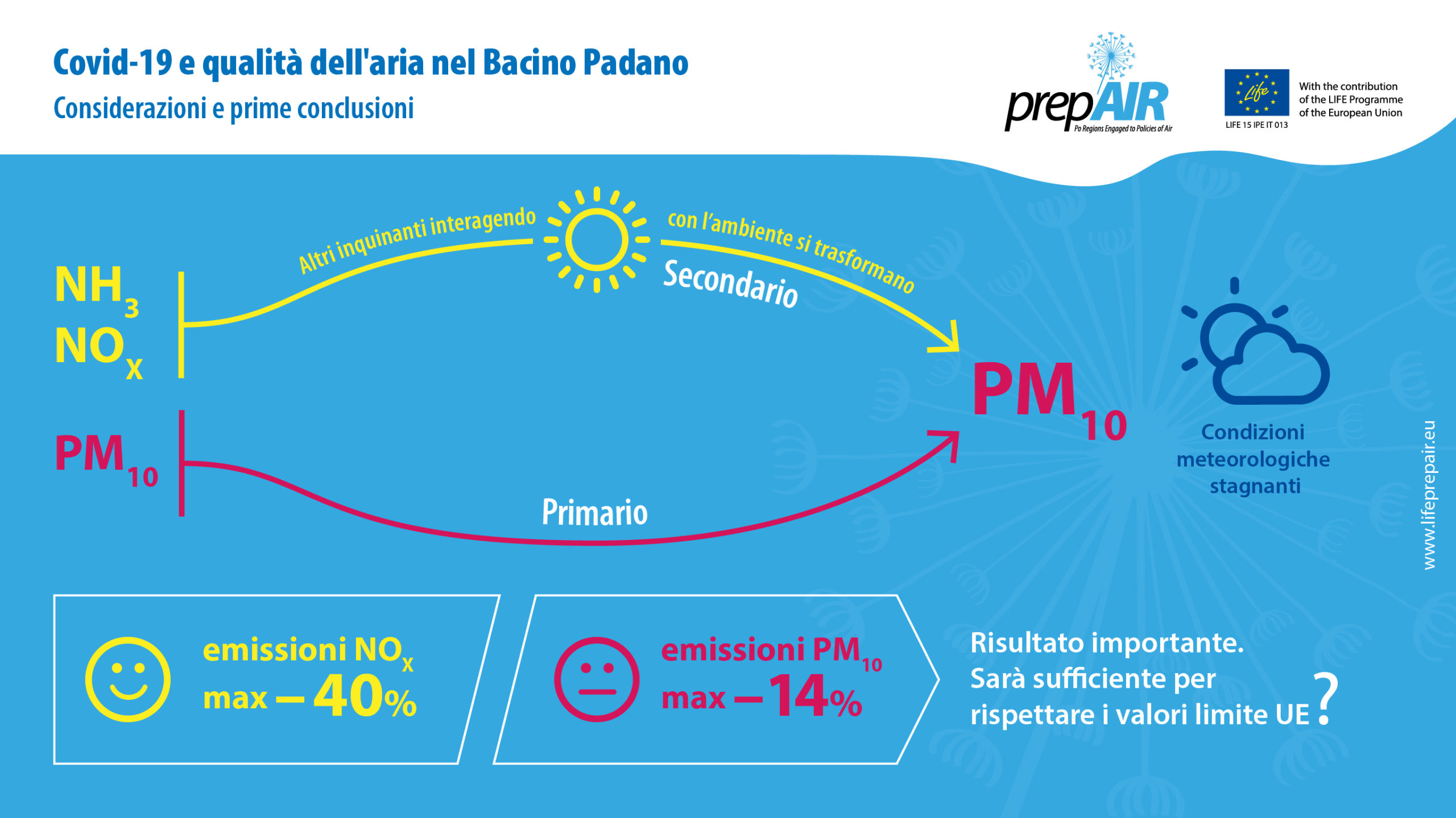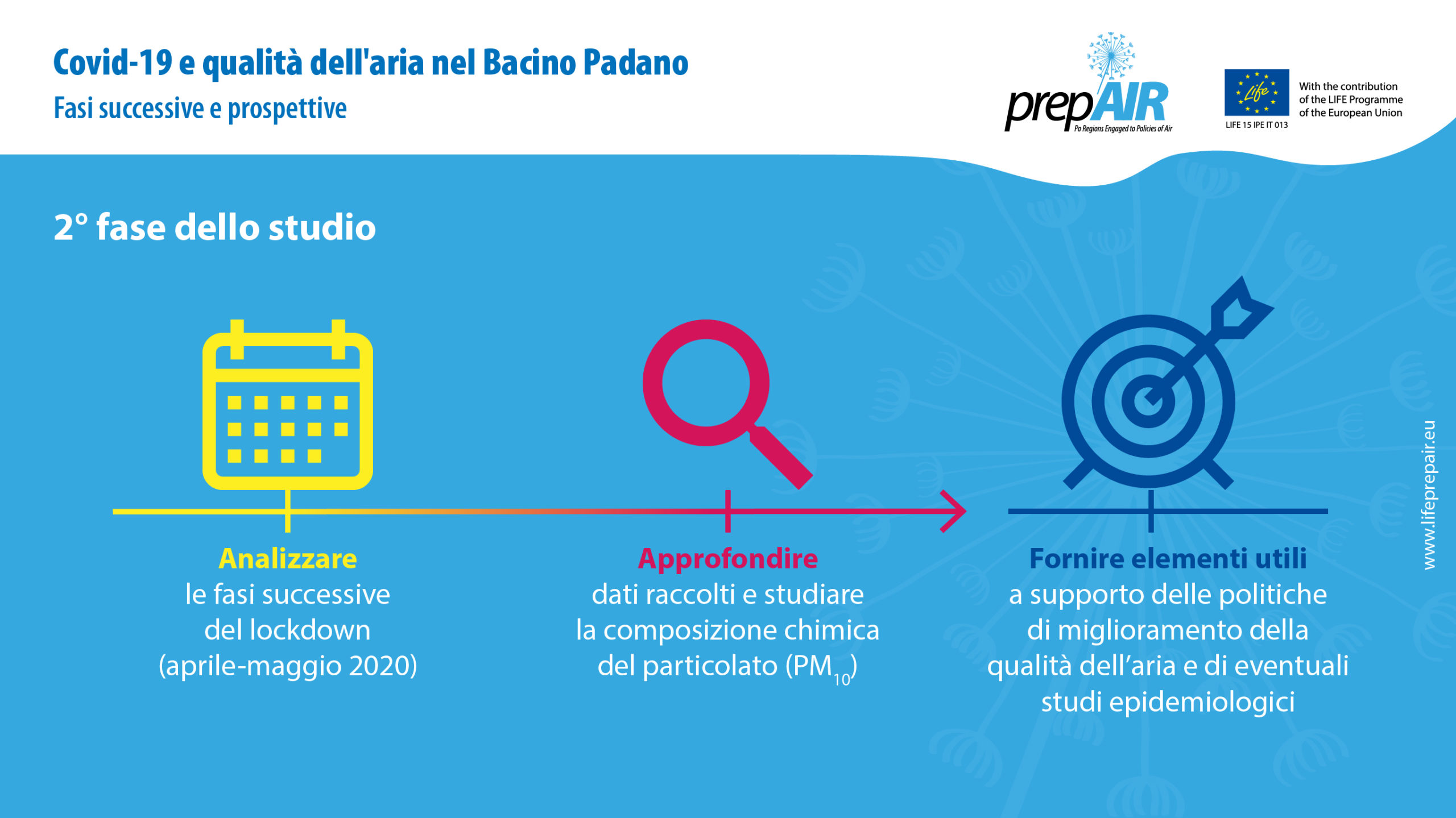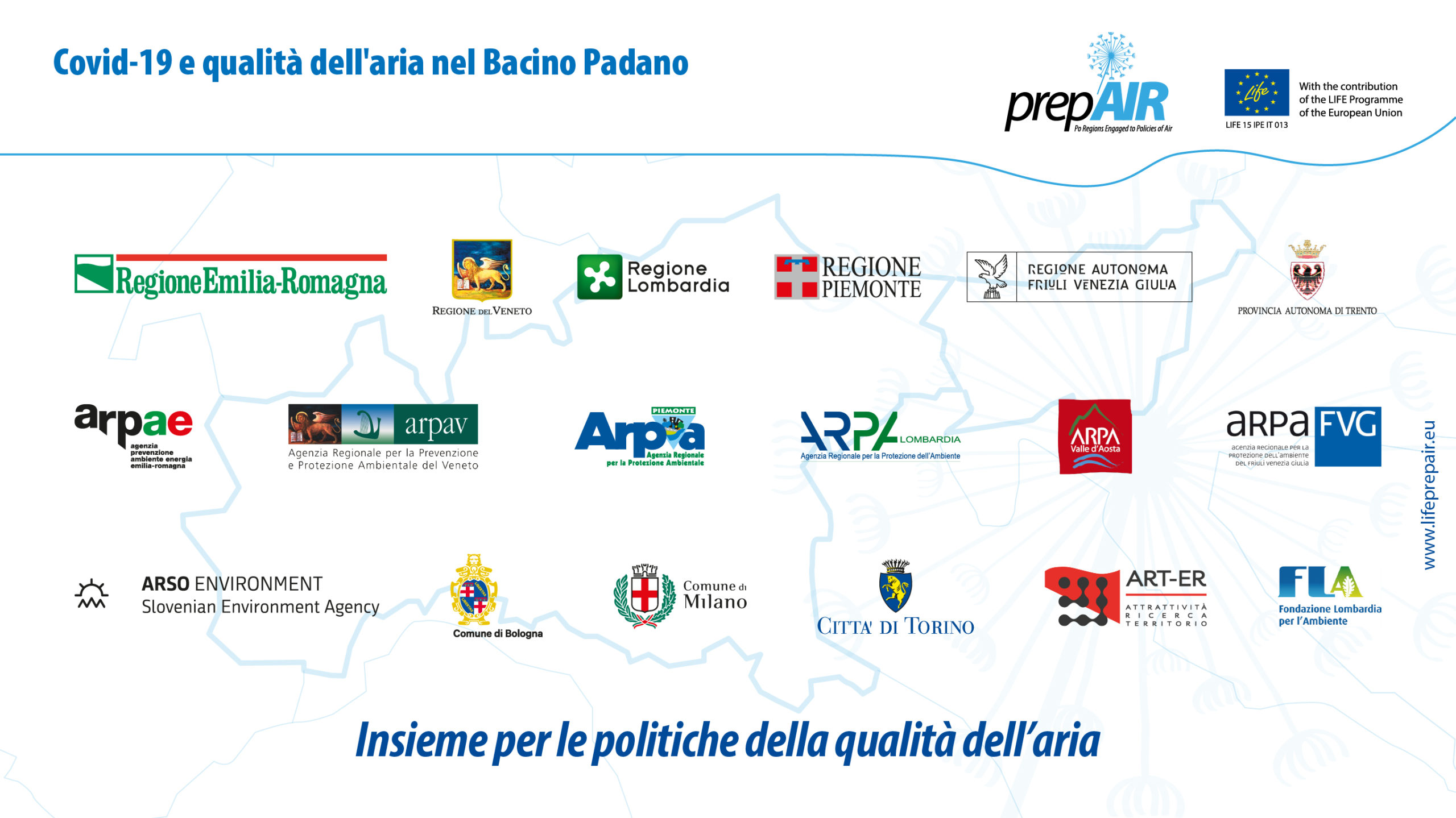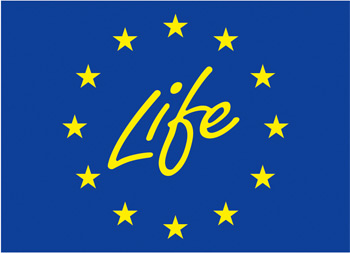On May the 19th, the partners of Project LIFE Prepair presented live on youtube the Preliminary Study on the Effects of COVID-19 Measures on Emissions and Air Quality in the Po Basin.
During the first months of 2020, the sanitary crisis caused by COVID-19 pandemic and the consequent containment measures adopted, generated a drastic and sudden reduction of some of the main sources of atmospheric pollution. A completely unprecedented condition that, in its tragic nature, created the occasion to study the dynamics of air quality in one of the most complex areas of Europe, the Po basin. Also one of the areas more dramatically hitten by the sanitary emergency.
The method
The report investigates the evolution of the different pollutants concentration on the whole basin area, in relation to the variation of emissions and the wheather conditions (also comparing it with previous years). In order to implement it, we based in a wide database collected and shared between the project partners.
Three aspects were mainly taken into account: the polluting emission variations due to the impact of the emergency measure on different sectors (transports, industry agricolture etc…), the evolution of the concentration of pollutants recorded by the monitoring stations of the whole basin and the data concerning the weather, that conditions concentration or dispersions of the pollutants.
In order to esteem the impact of the containment measures on the quality of air we breathe, we compared the real scenario, elaborated on the base of the measures of the monitoring stations, with an ipothetic “no-lockdown” scenario, simulated by a chemical model based on the real weather data and on the esteem of the polluting emissions that would have occured without the lockdown.
The results
The following are the main result obtained:
- the gaseous pollutant, like benzene and NOx showed significant reductions both compared to the month of march 2016-2019 and to the period before lockdown .
- those reductions have reached down to 58% for NO, 33% for benzene and 38% for NO2. The concentration value for this gas is abundantly under the avarage of the same time interval in previous year. In brief, as far as concern gaseous pollutants, all selected indicators confirm a significant reduction of atmospheric concentrations compared to “NO-COVID” Scenario.
- Particulate matter – PM10 and PM 2.5 – shows a complex dynamic: PM10 values recorded by monitoring station in march 2020 are on average lower compared to previous years. The reduction is less pronounced compared to the gaseous pollutants but a significant reduction on the maximum values has been observed anyway.
- PM10 and PM2.5 fractions variates consistently throughout March, very influenced by the weather condition, with minimum values in ventilated days and maximum values during stagnation. In this condition between march the 13th and 19th the limit of 50mg/m3) has been exceeded.
- In the latter days of the month it was registered a peak in the concentration of PM10 due to the transportation of large quantities of dust from the desertic area among the Caspian sea.
We can suppose that the relatively lesser reduction of the PM compared to gases was determined by a group of concurrent causes: the presence of big quantities of precursor pullutant, such as ammonia deriving from agricolture and animal farming, the increase of natural gas and wood consumption for domestic heating.
Those first results seems to confirm the need of a large scale, multi-sectorial and multi-pollutant strategy which carries out targeted actions to reduce both the emissions of precursors and primary PM. A preliminary confirm of some of the key-points of the Air quality plans adopted by the Regions of the Po basin and by the inter-regional agreements.
Nevertheless, in order to be more precise it will be necessary to wait for the results of following phases of the study. The next report, implemented by project Prepair, will deal with April and May and will take into account the analysis of the composition of the particulate matter.
The documents:
The summary of the report “Covid-19 and air quality in the Po
Valley” in english
The Report on Air Quality in Slovenia during Lockdown (produced bya ARSO – in English)
The infografics (in Italian)

